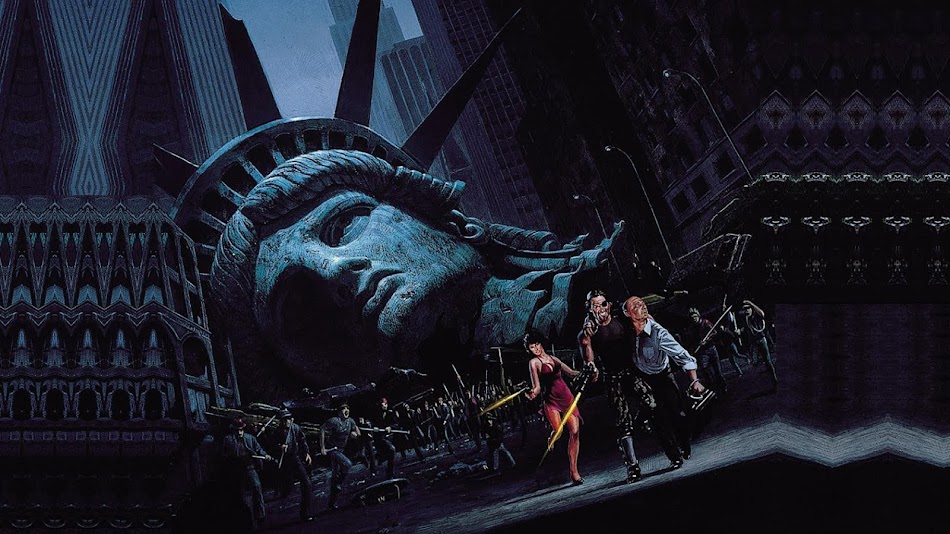COME OUT AND PLAY
(Mexico - 2013)
Made by Makinov. Cast: Vinessa Shaw, Ebon Moss-Bachrach, Daniel Giminez Cacho, Gerardo Taracena, Alejandra Alvarez. (Unrated, 86 mins)
This remake of Narciso Ibanez Serrador's 1976 Spanish cult horror classic WHO CAN KILL A CHILD? (based on a novel by Juan Jose Plans and released in the US in 1978 by AIP on the grindhouse and drive-in circuit in a re-edited version under the titles ISLAND OF THE DAMNED and TRAPPED) is almost slavishly faithful to its source film, which may have been an influence on Stephen King's short story "Children of the Corn." The initial set-up of COME OUT AND PLAY differs in that it eliminates the rather heavy-handed political subtext--the original Spanish version of Serrador's film opened with an eight-minute montage of documentary footage of war atrocities commited against children--and gets right to the story. Running nearly 30 minutes shorter than WHO CAN KILL A CHILD?, COME OUT AND PLAY improves on the pacing of the original film by nixing much of the endless travelogue footage that comprised its opening half hour or so, as well as utilizing a droning, nerve-jangling synth score and demonstrating a creepily effective use of sound throughout. Beyond that, it's WHO CAN KILL A CHILD?, right down to many sequences being restaged in their entirety, almost exactly as they were in Serrador's film.
Francis (Ebon Moss-Bachrach) and his pregnant wife Beth (Vinessa Shaw) are vacationing in Mexico before the arrival of their third child (the other two are back home with Beth's mom). They rent a boat and head to the distant island of Punta Hueca, only to find it almost entirely abandoned except for some strange children. It appears that people left in a hurry, and Francis realizes that something is seriously wrong when he finds a group of children killing an old man. Then he starts finding bodies around the village as he and Beth are pursued by packs of crazed, murderous kids.
COME OUT AND PLAY is the writing/directing debut of one "Makinov," a mystery man who presents himself as a sort-of Banksy of the horror genre, reputed to be some kind of masked Belarusian performance artist with no filmmaking experience, speaks only Russian, hates giving interviews, and laid out his artistic goals in an online manifesto from his "Dark Forest" headquarters shortly before last fall's run of film festivals. He has never allowed himself to be photographed without a mask or a hood, and even wears it on the set. According to an interview with Moss-Bachrach, who's likely just going along with the joke, Makinov indeed worked masked/hooded at all times (even, according to the actor, when the two went on a fishing trip during a break in filming), and was more concerned with "image," while more or less letting the actors do what they wanted. This sideshow act is an obvious publicity stunt, and with some stellar copyright detective work by Video Junkie's William Wilson and some assorted two-year-old Twitter posts that can be found via a simple Google search, there's a good amount of evidence that points to "Makinov" really being Mexican filmmaker Gerardo Naranjo, who received some arthouse acclaim a year or so ago with the thriller MISS BALA (there's also some comments on an IndieWire article as far back as 2011 that specifically mention "the remake of WHO CAN KILL A CHILD? that Gerardo Naranjo's doing." Why Naranjo--or whomever--had to create this ridiculous and extensive fake backstory to direct a remake of a relatively obscure Spanish horror film is a mystery. Other than personal amusement, ego, or a sociological experiment designed to punk some of the horror scene's more sycophantic fanboys (that I could actually get behind), there's really no point, other than "Makinov" being yet another in a string of recent would-be horror "auteurs" who think they're the star of the show and the films are secondary.
Allegedly budgeted at around $150,000 with presumably a skeleton crew (there are no credits other than five actors and, of course, Makinov), COME OUT AND PLAY doesn't really have a reason to exist, but as far as remakes go, it's decent in spite of the predictable need to ratchet up the grossout factor (needless to say, Serrador's film didn't show the kids playing with limbs and organs and making necklaces out of ears and fingers). While its admirable that Makinov didn't eliminate the finale that has the male lead (Australian actor Lewis Fiander in Serrador's film) graphically machine-gunning a bunch of kids, the staging of the scene in the remake is much more brief and with much fewer children, but it's probably harder to get away with in 2013 than it was in 1976. Sure, Moss-Bachrach is shown taking an oar and smashing kids' heads in, but having revisited Serrador's film just before watching the remake, that shot of Fiander mowing down about 50 kids is still shocking today. Serrador's film remains powerful but isn't flawless: the pacing is extremely slow and it takes forever to get going, and Makinov's version unquestionably is an improvement in that department. The film is hardly great, but it's credible enough that it can stand on its own without all of Makinov's shenanigans and pre-fab cult horror flim-flammery. And why dedicate the film "to the martyrs of Stalingrad"? And who is Makinov that he can call the film "Makinov's COME OUT AND PLAY," and end it with the words "Made by" and the letters "M-A-K-I-N-O-V" going across the screen in a huge font one-by one? I'll say this much: I'm highly skeptical that masked guerrila filmmakers from Belarus who live off the grid in the Dark Forest and post YouTube manifestos about the nature of their art agree to sign posters for a Dread Central contest.
Cut the shit, Makinov.






No comments:
Post a Comment